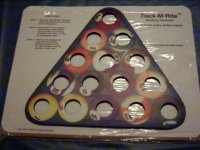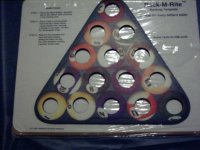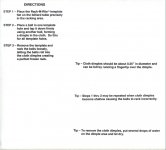Copied from my post in
another thread........
------
Personally, I have mixed feelings about the 10-ball on the break. OK, I lied... I hate it!

But I do see the value in it from a crowd pleasing standpoint. However, please note that in the other sports listed [baseball/basketball], the crowd pleasing things are a little different. For example, a home run takes a very good hit on the ball, so it is a skill shot, whereas the 10 on the break is mostly luck, and usually the result of a bad rack, ie., a gap right behind the 10 that caused it to shoot into a foot pocket.
Whether or not a slam dunk is a skill shot is debatable I suppose, but it doesn't really matter because it's only worth two points just like a regular field goal. What if a slam dunk were worth 10 points?

A 10-ball on the break is worth an entire game, which is way too much for a luck shot that is not even run-of-the-mill luck... it's RIGGED luck most of the time. I don't mean intentionally rigged, but rigged nonetheless by a flaw (gap) in the rack.
If pool ever does draw large crowds, most of them will probably never even realize it, but I think it is absolutely horrible anytime a 9-ball or 10-ball shoots straight into a foot pocket. It boarders on scandalous that we don't fix it, IMO. Here's one possible reason why that could be a big problem later:
Say pool becomes really popular as a spectator sport in the USA. Lots of people start betting on it. Underdog plays champion with huge betting odds given. Underdog snaps the 10 on the break 6 times in a row into the same foot pocket beating champion. Turns out the table was racking funky and there was a consistent gap behind the 10-ball and now everyone cries foul play. Huge black eye on the sport.
So what's the solution? There's got to be a compromise. For us regular schmucks at Joe's Billiard Parlor, IMO, the solution is rack-your-own, 9/10 on the break doesn't count. The races are painfully short anyway, so I don't see how it's fair for a race to 4 to be 25% crapped away on the break shot because the table doesn't rack right.
For the pros, particularly TV matches, I really think we need to consider using a racking template to guarantee that the balls are all frozen. Then we can count it as a win without it being such a tainted victory. If the 10 goes on the break when it was totally frozen, it is fair enough for me.
When it goes in on what is essentially a trick-shot break due to a rigged rack, it really is a disgrace to the game, IMHO.




